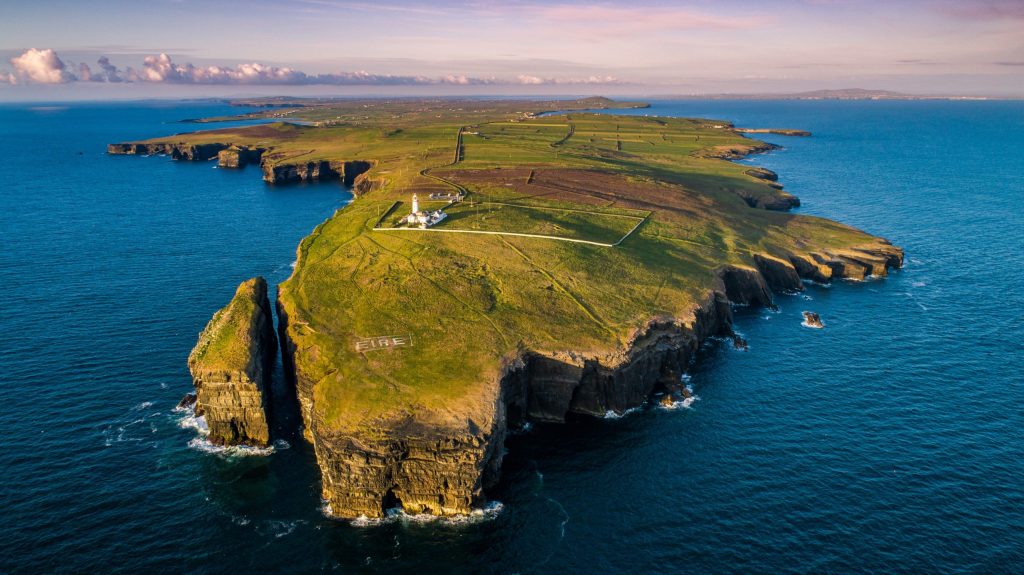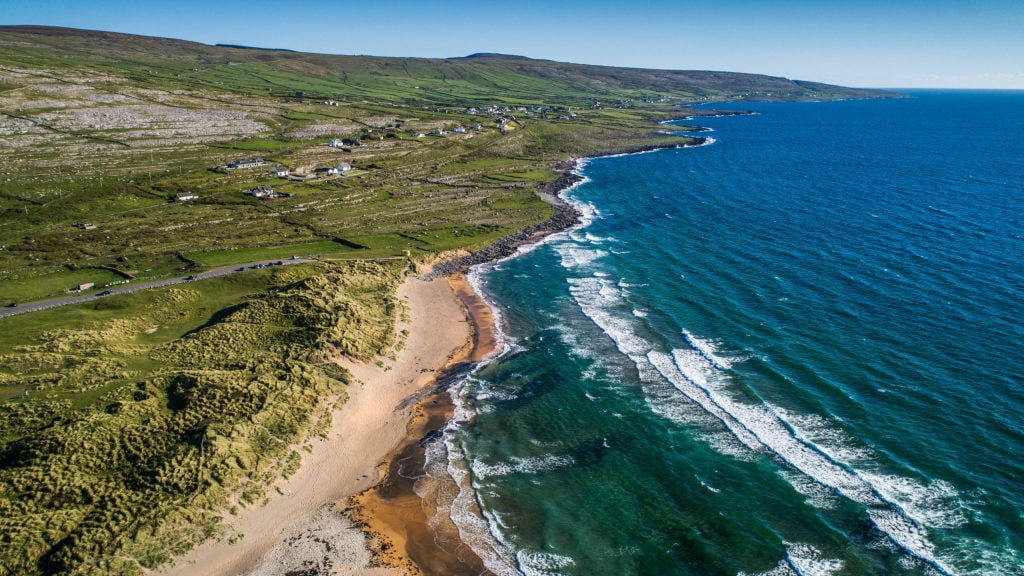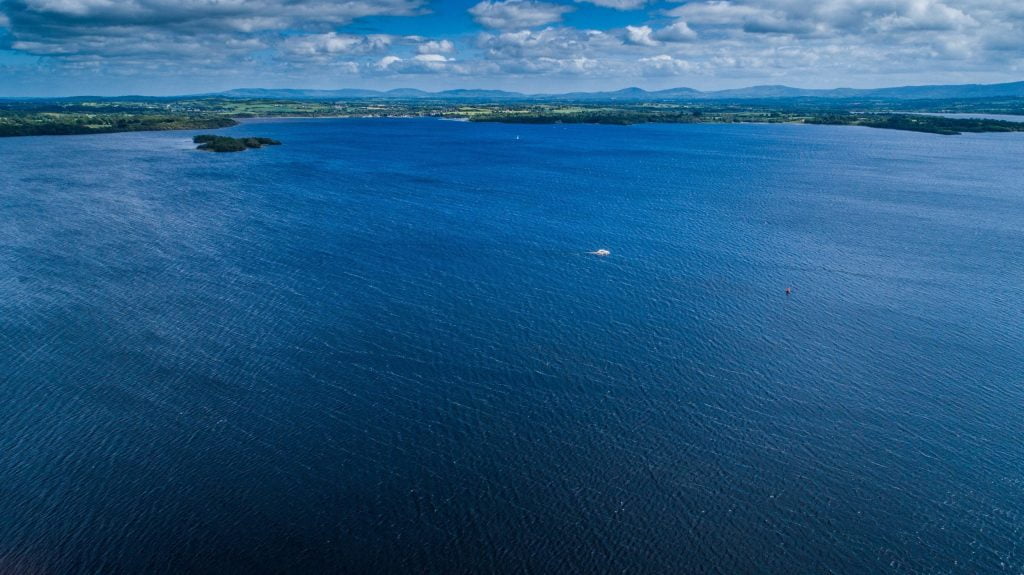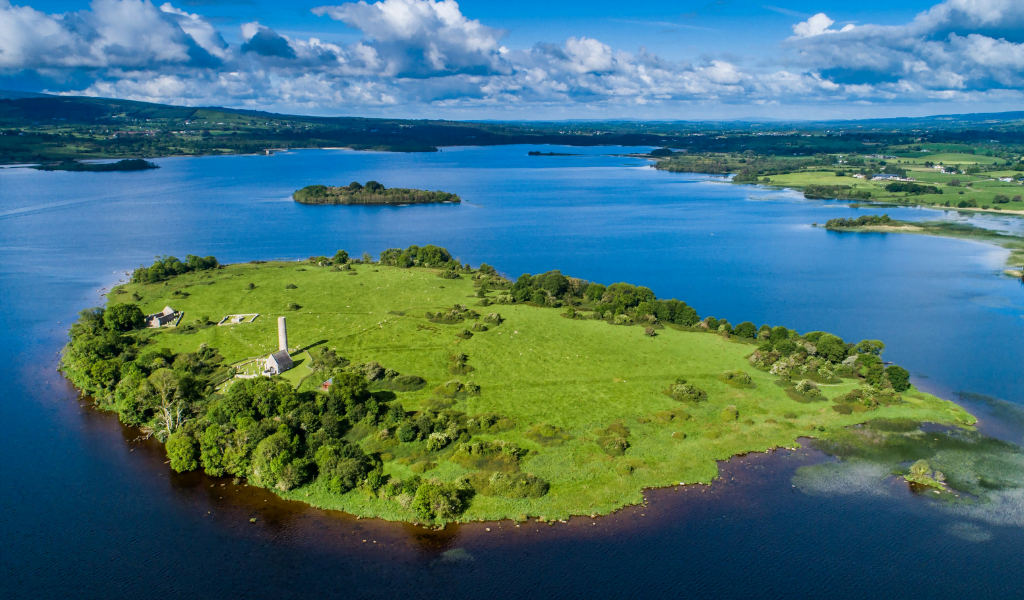See Clare from the air…and choose where to visit!
a bird’s eye view of Clare’s open spaces and amazing places
Migrant birds fly to County Clare every year. They love the clean, green environment, the open spaces, amazing places, and the pure fresh air. And they meet up with friends!Loop Head Peninsula
The edge of the world!
West Clare

This slender finger of land points out to sea from the most westerly point of County Clare, on Ireland’s Atlantic coast. It lays between the ocean on one side and the Shannon Estuary on the other. This is a designated European Destination of Excellence in marine tourism, and the wildlife love it too!
Clare’s Wild Atlantic Way coastline
It is spectacular
West and North Clare

Clare’s coastline is at the centre of Ireland’s Wild Atlantic Way. It’s a spectacular coastline with cliffs and coves, glacial-era landscapes, and fine-grained golden beaches. A hotspot for wildlife!
The world-famous Cliffs of Moher
Ireland’s most visited natural attraction
North Clare

The amazing Cliffs of Moher are not just Ireland’s #1 natural visitor attraction for people. A designated Special Protection Area for birds, it’s home to over 20 different bird species, including internationally important numbers of guillemot and razorbill and significant numbers of puffin, kittiwake, and fulmar.
Open expanses of ocean, rivers and lakes
Take to the water!
County Clare

Clare is almost entirely enveloped by vast expanses of traversable water. The Atlantic Ocean, Lough Derg, the East Clare Lakelands, and the River Shannon all have broad appeal for water activities and are home to teeming wildlife.
Lough Derg – the River Shannon’s largest lake
A world of water activity
East Clare

Lough Derg is the River Shannon’s largest freshwater lake – navigable over its 40 km length. It’s idyllic for outdoor adventure – and the birds, fish and other wildlife think so too.
The Burren
One of the unique landscapes of the world
North Clare

This is one of the world’s unique landscapes, a plateau formed over millions of years. It’s a karst landscape of bedrock incorporating a vast cracked pavement of glacial-era limestone, with cliffs and caves, fossils, rock formations and archaeological sites. The area, which includes the Cliffs of Moher, was awarded prestigious UNESCO Global Geopark status. A special place for wildlife.
The Islands
The sense of history is palpable
East Clare

Clare has several islands – all reachable within 15 to 40-minute boat trips. Scattery Island, just off Kilrush, was where St Senan founded a monastic settlement in the 6th century. Inis Cealtra (Holy Island) is on Shannon’s Lough Derg, and its history as a monastic settlement dates to the 7th century. The Aran Islands, with their stunningly beautiful cliffs, rugged landscapes and ancient forts, can be easily reached by ferry from Doolin.
The River Shannon
Ireland’s longest river
East Clare

The River Shannon, Ireland’s longest River, is over 360 km in length, starting in Cavan and flowing into the Atlantic Ocean through the Shannon Estuary. Here it is flowing through the twin towns of Killaloe, County Clare and Ballina, County Tipperary.
The Shannon Estuary
Where the mighty Shannon meets the Wild Atlantic
County Clare

The Shannon Estuary is where the River Shannon flows into the Atlantic Ocean. It is home to Europe’s largest resident population of dolphins. Along the Shannon Estuary route you will find delightful towns and pretty villages all shaped by the great river.

